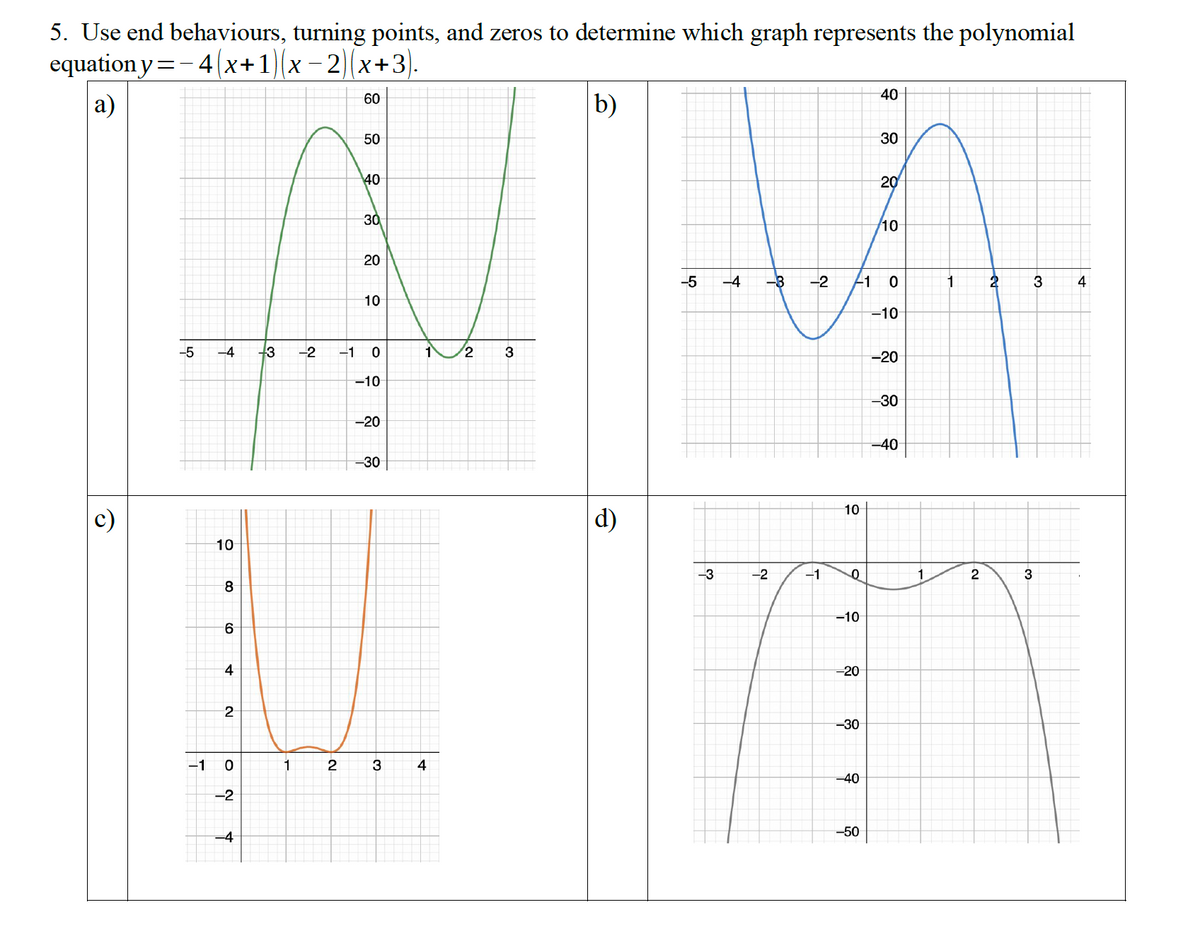5. Use end behaviours, turning points, and zeros to determine which graph represents the polynomial equation y=- 4(x+1)(x – 2)(x+3). a) 40 b) 60 50 30 40 20 30 10 20 -5 -4 -3 -2 -1 0 2 3 4 10 -10 -5 -4 3 --2 -1 0 /2 3 -20 -10 -30 -20 -40 -30 d) 10 c) 10 -3 -2 -1 1 2 3 8 -10 6 4 -20 2 -30 -1 0 1 2 3 4 40 -2 -50 -4
5. Use end behaviours, turning points, and zeros to determine which graph represents the polynomial equation y=- 4(x+1)(x – 2)(x+3). a) 40 b) 60 50 30 40 20 30 10 20 -5 -4 -3 -2 -1 0 2 3 4 10 -10 -5 -4 3 --2 -1 0 /2 3 -20 -10 -30 -20 -40 -30 d) 10 c) 10 -3 -2 -1 1 2 3 8 -10 6 4 -20 2 -30 -1 0 1 2 3 4 40 -2 -50 -4
Algebra & Trigonometry with Analytic Geometry
13th Edition
ISBN:9781133382119
Author:Swokowski
Publisher:Swokowski
Chapter4: Polynomial And Rational Functions
Section4.3: Zeros Of Polynomials
Problem 54E
Related questions
Question
100%
Pls help ASAP.

Transcribed Image Text:5. Use end behaviours, turning points, and zeros to determine which graph represents the polynomial
equation y =- 4 x+1)(x - 2)(x+3).
40
b)
60
а)
50
30
40
20
30
10
20
-5
-4
-3
-2
1
2
4
10
-10
-5
-4
3
-2
-1 0
2
3
-20
-10
-30
-20
-40
30|
10
d)
10
-3
-2
-1
3
-10
-20
-30
-1
2
3
4
-40
-2
-50
-4
4-
Expert Solution
This question has been solved!
Explore an expertly crafted, step-by-step solution for a thorough understanding of key concepts.
Step by step
Solved in 2 steps with 2 images

Recommended textbooks for you

Algebra & Trigonometry with Analytic Geometry
Algebra
ISBN:
9781133382119
Author:
Swokowski
Publisher:
Cengage

College Algebra
Algebra
ISBN:
9781305115545
Author:
James Stewart, Lothar Redlin, Saleem Watson
Publisher:
Cengage Learning

Algebra & Trigonometry with Analytic Geometry
Algebra
ISBN:
9781133382119
Author:
Swokowski
Publisher:
Cengage

College Algebra
Algebra
ISBN:
9781305115545
Author:
James Stewart, Lothar Redlin, Saleem Watson
Publisher:
Cengage Learning